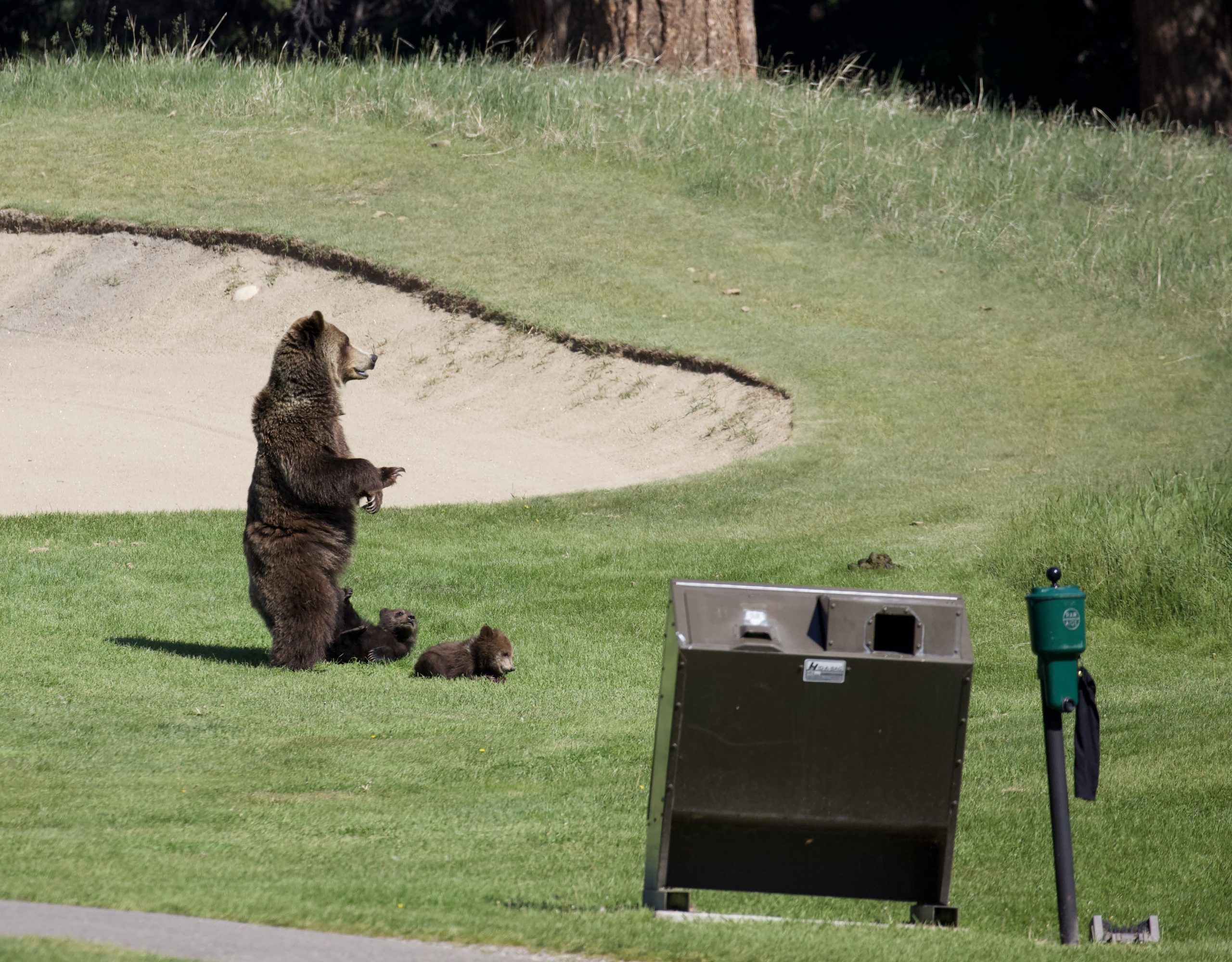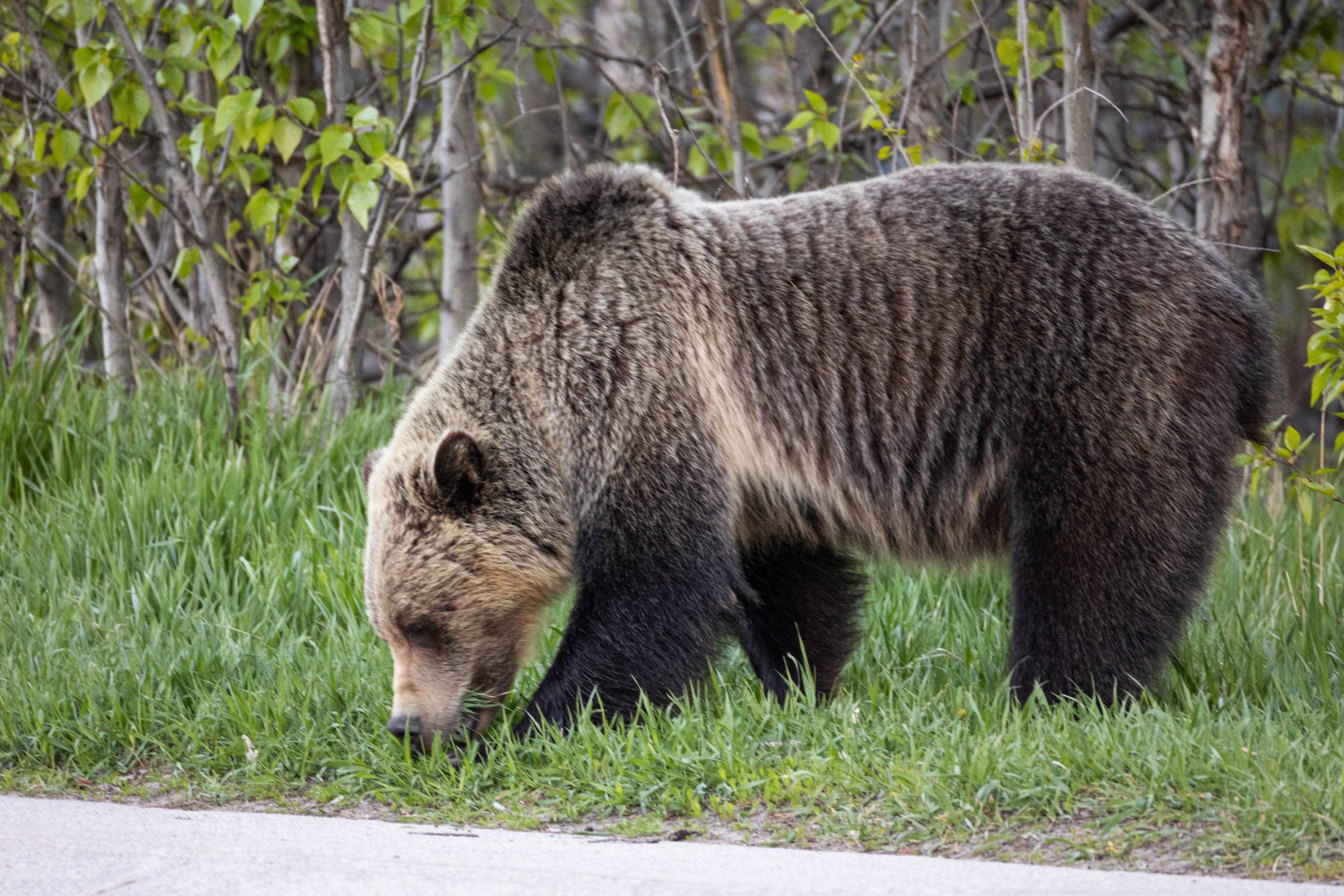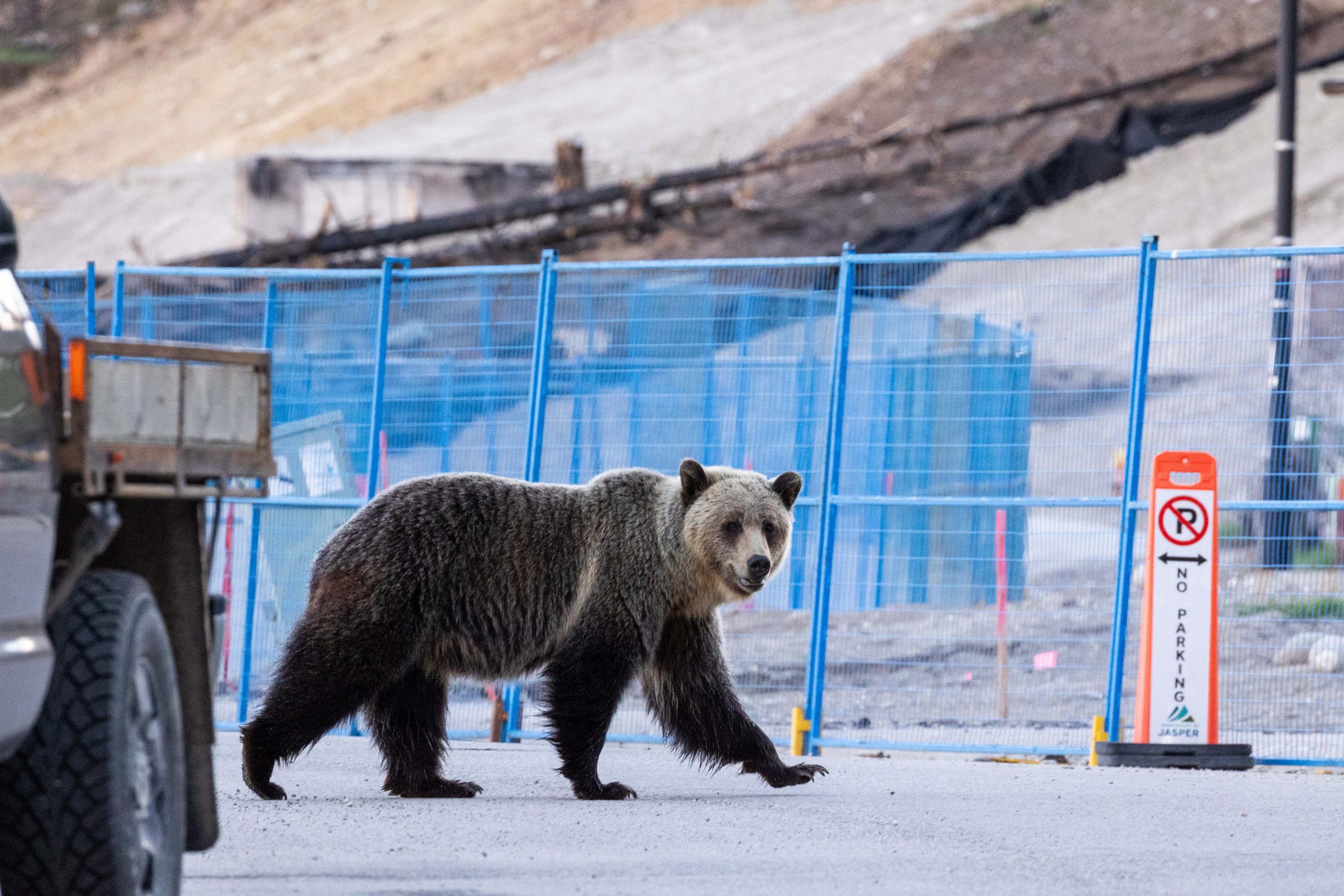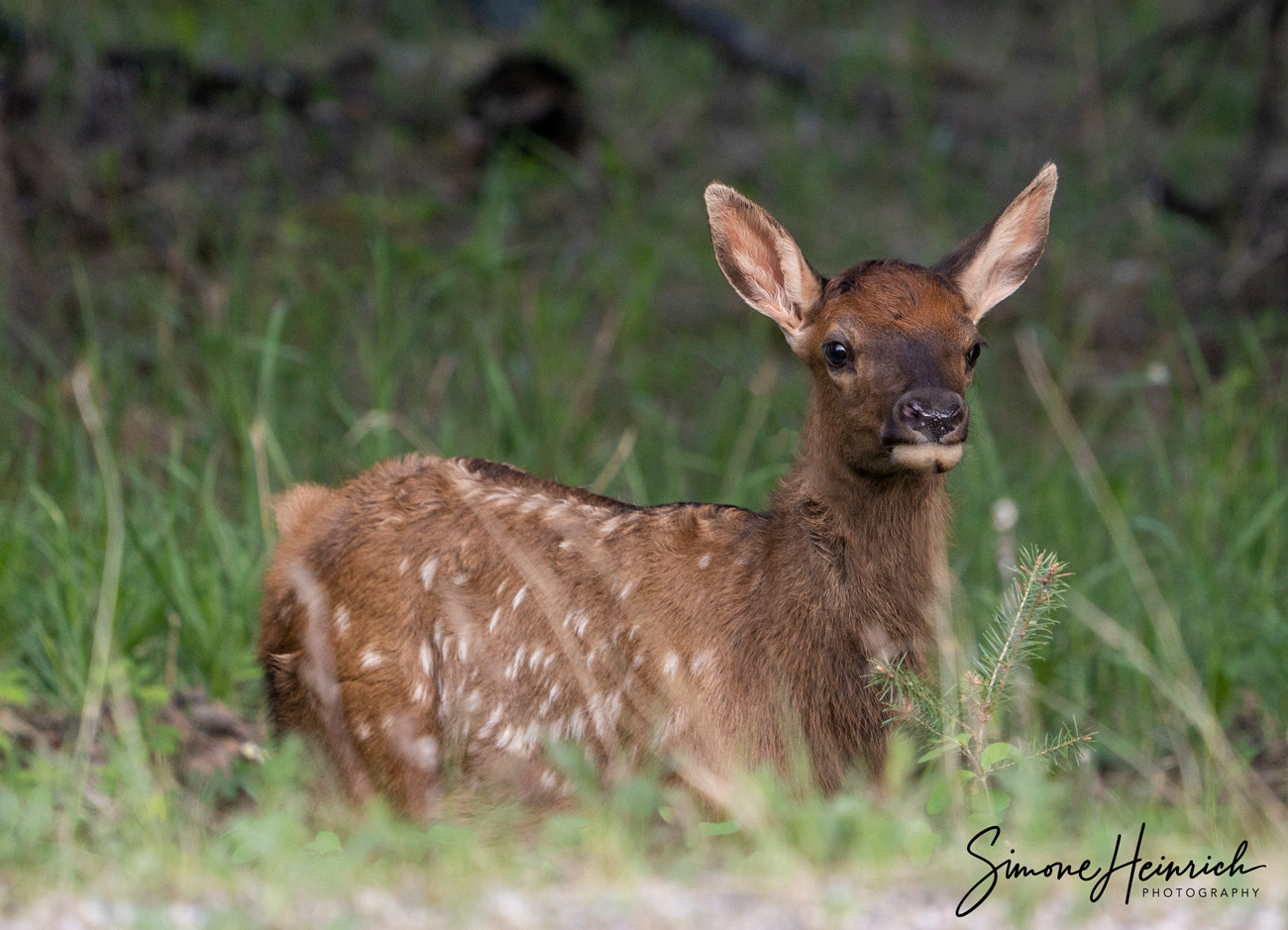Collars, fences and attractant elimination keys to bear management
Jasper National Park bear biologists are keeping a close eye on area grizzlies.
At the same time, initial steps are being taken for two large fencing projects in the park to help mitigate human-wildlife conflicts.
As of June 9, seven local grizzly bears had been fit with GPS collars—part of a more proactive approach to managing bear behavior, according to Ecologist Team Leader for JNP’s Human–Wildlife Coexistence program, Tracy McKay.
“The collars mean we can keep track of them in real time,” McKay said. “Collaring lets us get ahead of any behaviour progression.”
As Jasperites will recall, grizzly bears in Jasper have occasionally been introduced to rewards in the form of human food. And as the literature suggests, a fed bear is often a dead bear—not to mention the negative public safety consequences of food-conditioned animals.
To nip those potential problems in the bud, the increased collaring program allows wildlife-coexistence staff to begin an aversive conditioning program if bears start misbehaving.
“Research shows you can prevent that progressive behaviour if you target specific bears,” McKay said.

Picnic Bears
A trio of grizzlies McKay and her team are keeping close watch over is Bear 222 and her cubs—also known as the “picnic bears,” after they got into visitors’ lunches at Lake Annette in 2023. After the incident, the bears were trapped and relocated out of town. However, the family remained human-habituated, coming into close contact with campers at Coronet Creek last year, and causing a stir this spring when they ambled down the Maligne Lake Road en route, apparently, to their former stomping grounds.

While the picnic bears have so far this spring kept their noses out of trouble, McKay is concerned for when the two-year-olds get the boot.
“We think [the mother] has been teaching them her less-than-ideal behaviour,” McKay said.
On June 13, resource conversation staff replaced Bear 222’s collar with a new one, and put ear tags on the two young bears. Along with 222, six other grizzlies—four other adult females, a sub adult male and an adult male—have been fit with collars.
Three “of interest” bears, according to McKay, are two yearlings who, along with their adult mother, have been spending a lot of time around the Miette River bridge on Highway 93, Beckers Chalets and Whistlers Campground. Springtime in the valley bottom provides a bounty of nutrients for bears, including recently greened-up vegetation and an easy, high-in-calories meal: elk calves.
“Most of the time, grizzly bears can’t catch prey,” Human-Wildife Coexistence Spealist James McCormick has said. “What keeps them here in the valley bottom is the opportunity to hunt.”

Fenced in
In the near future, however, bears won’t be able to get into the 781-site campground. Parks Canada has plans to erect a fence around the facility. Moreover, fencing around the Jasper Park Golf Club is currently being stood up, and feasibility of electrifying the perimeter in the near future—with the objective of excluding bears—is being assessed, according to McKay.
While these mitigation strategies evolve, McKay emphasized the importance of attractant management in the townsite. As contractor camps and temporary housing has come on line in Jasper, there will be more potential conflict sites at construction zones and around food preparation areas, such as barbecues.
“The biggest thing is attractant management,” McKay said. “Getting rid of attractant trees will take us a long way in helping reduce the risks of conflict.”
In people’s yards, vegetation—including fruit-bearing trees—bird feeders, garbage, compost and recycling should be managed in such a way that bears aren’t tempted to investigate.
“We haven’t have grizzlies in our fruit trees yet, but we have seen that in other towns,” McKay said.
While Parks Canada is encouraging residents to remove attractants from their yards, they’re also putting the message out for visitors to stay 100 metres away from bears. Wildlife photographers—professional and otherwise—are notoriously difficult to persuade to keep their distance, McKay said.

“People are so excited to see bears, I totally get it, but giving bears their space is really important.”
To help drive the message home, Jasper National Park has enacted a Restricted Activity Order, requiring people to stay at minimum 100 metres from bears and 30 metres from ungulates.
Jasperites are encouraged to report any bear sightings within the townsite to Jasper Dispatch, 780-852-6155.
Avoid elk emergencies
Speaking of ungulates and public safety, Parks Canada has seen an uptick in negative elk encounters this spring.

McKay said one theory for the increased conflicts is the burned forest provides less cover for female elk to drop their calves in private, and the already-temperamental animals are more on-edge. Regardless, more humans are being put in danger with aggressive elk. In one of more than 30 such encounters already this spring, a member of Parks Canada’s Resource Conservation team came into contact with a female elk, resulting in minor injuries to the staffer.
“In previous years we’ve had people suffer severe injuries. Pets have been killed. Female elk can be very persistent. They will continue to follow people for up to 500 metres,” McKay said.
Residents and visitors can help Parks Canada mitigate negative public safety incidents by reporting any aggressive elk behaviour to Jasper Dispatch, 780-852-6155.
Bob Covey // bob@thejasperlocal.com


